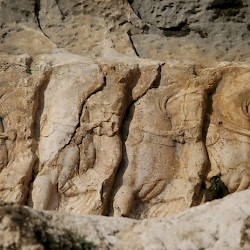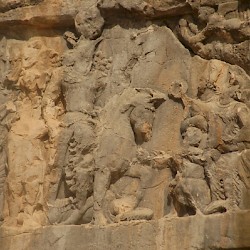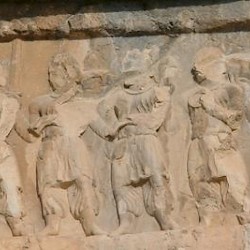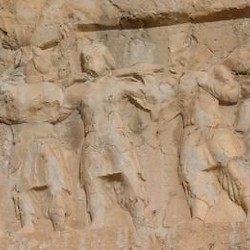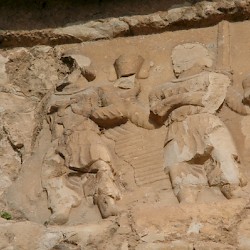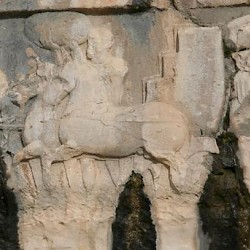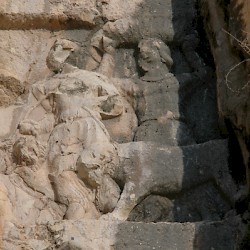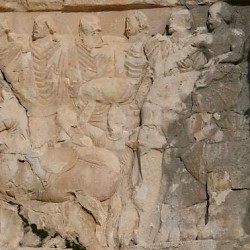Bishapur, Relief III
Relief III
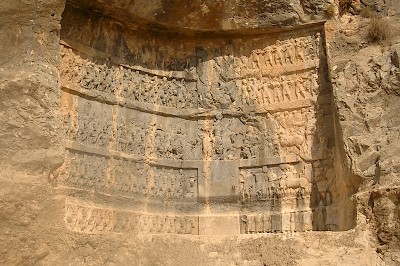
The third relief at Bishapur's Tang-e Chowgan has five horizontal registers. Like reliefs one and two, it was made for the Sasanian king Shapur I (r.241-272), and like two other monuments on the north side of the river, it was damaged when an aqueduct of stone was constructed along the rock. This was removed in the 1970s.
In the center, we see Shapur's triple victory, which was also the theme of the second relief at Bishapur, and is depicted in Naqš-e Rustam too. Underneath the king's horse, we see the Roman emperor Gordian III, who was killed in 244; elsewhere, we recognize Philippus Arabs, who was made emperor by Shapur; and to the left, we see the captured Valerian. These figures are very damaged, but it is obvious that the design is a copy of the relief at Naqš-e Rustam.
To the left and right, all kinds of people are approaching. The horsemen in the middle register are more elaborated than those in the upper and lower registers. Probably, those in the center are courtiers and officers. Because there are so many horsemen, it has been suggested that this relief represents a special equestrian victory, but this is unlikely. The same composition - cavalry to the left, infantry to the right - can be seen on the second relief at Bishapur.
The infantry carry the tribute that was paid by Shapur's enemies. This is not only Roman tribute, because we can discern an elephant, which suggests a victory against the Yuezhi nomads or Kushans of Gandara, the valley of the river Kabul. The Persians took Peshawar and carried away a precious religious object, Buddha's begging bowl. Was it brought to Bishapur?
In the fourth and fifth register, we see other people carrying tribute. These men have been identified with Romans, although their dress is a bit unusual: some have trousers. If they are Romans, they may have been Gauls, or people from the German provinces. Theirs must have been a fascinating story!
Finally, it must be noted that there is an element of archaism in this relief. The motif of people bringing tribute was old, and it is possible that the sculptor was reminded of earlier, Achaemenid art (e.g. on the famous eastern stairs stairs of the Apadana at Persepolis).
Literature
Louis Vanden Berghe, Reliefs rupestres de l' Iran ancien (1983 Brussels), #61.
